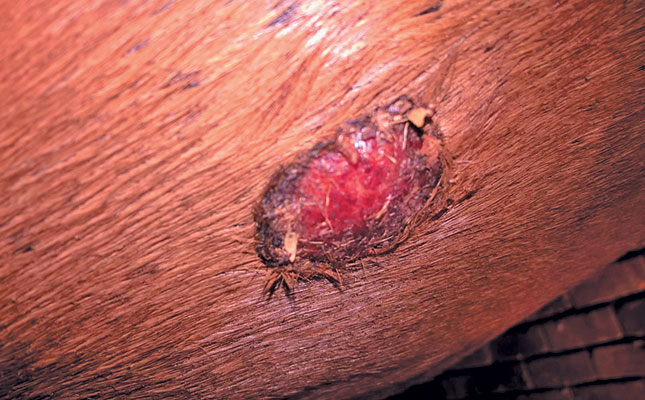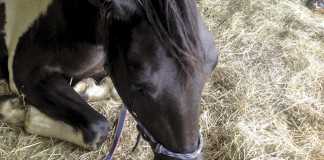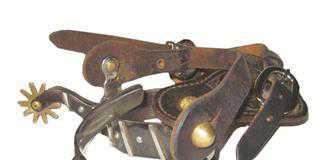
An equine sarcoid is a skin tumour commonly found on horses. Fortunately, it is seldom life-threatening. It can easily be mistaken for a papilloma, but the latter disappears on its own over time. A sarcoid rarely does and invariably requires treatment.
There are six types of equine sarcoid. Each has a different appearance:
Nodular: Firm, raised circular tumours 5mm to 20mm in diameter. Commonly found on the sheath/groin area and eyelids.
Fibroplastic: Fleshy and ulcerative. Grows very fast. Usually found along the groin, lower legs and eyelid.
Verrucous: Has a wart-like appearance and can occur anywhere on the face, body or groin.
Occult/flat: Flat and circular with a thickened area, but may also appear as small nodules 2mm to 5mm in diameter. Usually found on the neck, mouth, eyes and inside of the thighs and upper forelegs.
Malevolent: Presents as multiple nodules. Usually invasive. Can settle in the lymphatic system. Resembles pearls under the skin.
Mixed: A mixture of the foregoing, this is usually a sarcoid that has been on the body for a long time, or has undergone some sort of trauma.
Diagnosis
No specific cause has been identified for sarcoids, but the bovine papilloma virus (BPV) is thought to be a contributor. A vet will be able to diagnose the sarcoid by its appearance and location. If necessary, he or she will carry out a skin biopsy. This, however, may irritate the tumour and worsen it.
Treatment
Many treatment options are available. Surgical removal is one, but this can result in scar tissue formation, pain and swelling. Laser resection, another option, reduces these problems. In addition, the heat produced by the laser kills the tissue surrounding the sarcoid, reducing the chance of cells spreading.
Cryosurgery uses liquid nitrogen. This freezes and kills the sarcoid, causing it to slough off. The process often kills off hair follicles, leaving a bare spot on the skin. If hair does return, it is white.
One newer treatment involves injecting chemotherapy drugs into the sarcoid. Another is the use of a topical cream containing natural alkaloids. This produces a localised immune response that causes the body to reject the sarcoid tissue.
Similarly, alternative therapy involves blending herbs to help support the immune system and aid in the expulsion of the offending matter.
Echinacea, mistletoe and Equisetum are all powerful blood cleansers; comfrey supports the immune system, violet leaves facilitate cleansing via the lymphatic system, and vervain, a nervous system tonic, supports the entire process.
A topical application of Thuja and Astragulus will help reduce the size of the tumour. Use tincture or a cream. The more regularly the mixture is applied, the faster it will work.
Sources: petmd.com; Ferguson, V. (2010) The Complete Horse Herbal Book, Melbourne Publishing Group.
Kim Dyson breeds Arabians and Lusitanos, and has 22 years’ experience in holistic equine and human body work.













